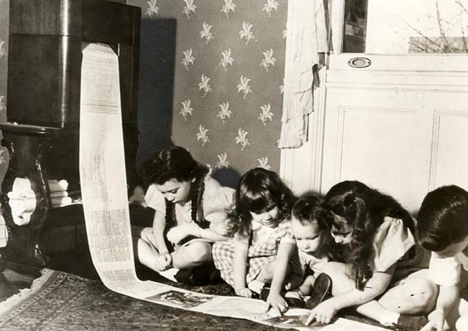From “How to Stop Worrying and Learn to Love the Internet,” Douglas Adams’ perceptive 1999 piece about Web 1.0 and where it was all headed:
“But the biggest problem is that we are still the first generation of users, and for all that we may have invented the net, we still don’t really get it. In The Language Instinct, Stephen Pinker explains the generational difference between pidgin and creole languages. A pidgin language is what you get when you put together a bunch of people – typically slaves – who have already grown up with their own language but don’t know each others’. They manage to cobble together a rough and ready lingo made up of bits of each. It lets them get on with things, but has almost no grammatical structure at all.
However, the first generation of children born to the community takes these fractured lumps of language and transforms them into something new, with a rich and organic grammar and vocabulary, which is what we call a Creole. Grammar is just a natural function of children’s brains, and they apply it to whatever they find.
The same thing is happening in communication technology. Most of us are stumbling along in a kind of pidgin version of it, squinting myopically at things the size of fridges on our desks, not quite understanding where email goes, and cursing at the beeps of mobile phones. Our children, however, are doing something completely different. Risto Linturi, research fellow of the Helsinki Telephone Corporation, quoted in Wired magazine, describes the extraordinary behaviour kids in the streets of Helsinki, all carrying cellphones with messaging capabilities. They are not exchanging important business information, they’re just chattering, staying in touch. ‘We are herd animals,’ he says. ‘These kids are connected to their herd – they always know where it’s moving.’ Pervasive wireless communication, he believes will ‘bring us back to behaviour patterns that were natural to us and destroy behaviour patterns that were brought about by the limitations of technology.’
We are natural villagers. For most of mankind’s history we have lived in very small communities in which we knew everybody and everybody knew us. But gradually there grew to be far too many of us, and our communities became too large and disparate for us to be able to feel a part of them, and our technologies were unequal to the task of drawing us together. But that is changing.
Interactivity. Many-to-many communications. Pervasive networking. These are cumbersome new terms for elements in our lives so fundamental that, before we lost them, we didn’t even know to have names for them.”

